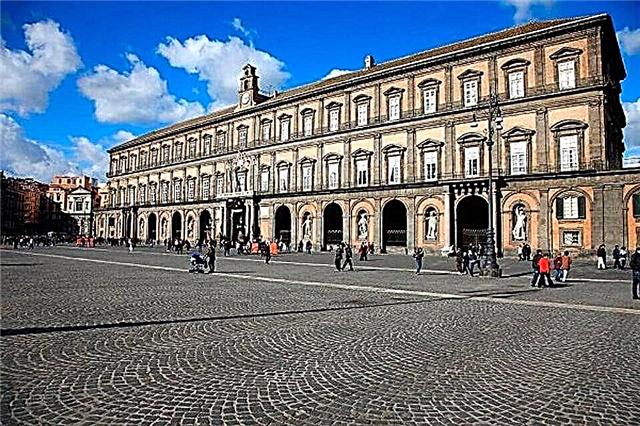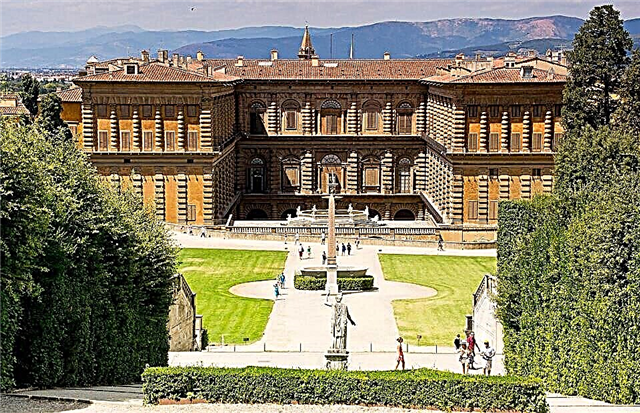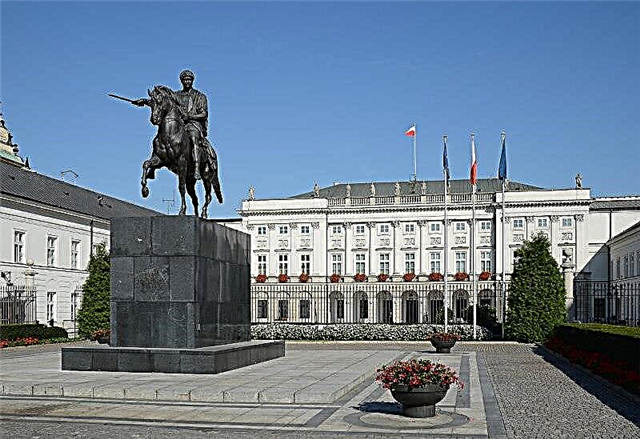Mogilev is one of the richest cities in Belarus. The Dnieper divides it into two parts, which gives the district a strategic importance. The city played an important role in the Northern War, and was also seriously damaged during the Second World War. In the course of history, the ownership of the city has changed. It was part of the Lithuanian principality and the Commonwealth. This was reflected, among other things, in the appearance of streets and buildings: even now, Mogilev looks more like the cities of Western Europe than its neighbors.
Many architectural monuments have survived, although some, like the town hall, had to be rebuilt from scratch. Green areas from the embankment to the Pechersky forest park are a great addition to the architectural beauty. And one of the most interesting urban projects - "Stargazer" - an unusual sundial in the form of a sculptural composition.

The best hotels and hotels at affordable prices.
from 500 rubles / day
What to see and where to go in Mogilev?
The most interesting and beautiful places for walking. Photos and a short description.
Town hall
The first building on this site appeared in the second half of the 16th century. It was made of wood and suffered from fires on several occasions. One hundred years later, the construction of the stone town hall began. Its height was 46 meters. During the Great Patriotic War, such an important city object was blown up. The new version of the town hall was opened only in 2008. It has acquired modern features, but retained the classic style.

"To fighters for Soviet power"
The opening took place in 1982 on Sovetskaya Square. The memorial complex appeared on the site of the building where Nicholas II lived for some time in the last years of his reign. The 13-meter-high granite stele is crowned with a 7-meter sculpture of a woman. Her image, posture and evolving clothing symbolize victory. Bronze bas-reliefs tell about important events in the history of Mogilev, including the strengthening of Soviet power.

Leninskaya street
One of the oldest streets in the city: it has been known since the 16th century. In the past, it was called Trade and Big Governor's. Two thirds of the total length of 1,490 meters is the pedestrian part. During the walk, you can see the building of the city council, the reconstructed town hall, the former shopping arcade, the bishop's court, the church and the museum of painting. There are shops and cafes where tourists gather strength to continue their journey.

Sculpture "Stargazer"
Mogilev's Square of Stars is similar to the "Walk of Fame" that exists in different cities. The names of prominent people are immortalized here. The sculptural composition "Astrologer" in its meaning is very suitable for such a place. In addition, a telescope and 12 chairs placed around it according to the number of signs of the zodiac - a sundial. The author of such an unusual project is the Belarusian sculptor V. Zhbanov. The opening took place in 2003.

Cathedral of Three Saints
The main Orthodox church in the city took 11 years to build and was consecrated in 1914. Named after Basil the Great, John Chrysostom and Gregory the Theologian. You can go inside from three sides. After the fall of the autocracy, the church worked intermittently until the 60s. The premises were given for a club, the crosses and domes were removed, and the bell tower was demolished. The cathedral was returned to believers 30 years later.

Cathedral of the Assumption of the Virgin Mary and St. Stanislav
Construction was carried out in the first half of the 18th century. Refers to examples of the Baroque style. One of the features is the painting of the vaulted ceiling with scenes from the Bible. The church that previously stood on this site was named in honor of the Assumption of the Blessed Virgin Mary. In the middle of the last century, the cathedral was closed, and the premises were adapted for an archive. In the 90s, it was returned to the diocese. Since the same period, the festival of sacred music "Magutny Bozha" has been hosted.

St. Nicholas Monastery
Initially, a nunnery appeared on this place in the 17th century. All wooden buildings burned down during the Northern War. The nuns were relocated to a safer place, and the surviving and restored premises were taken over by the male abode. Subsequently, only St. Nicholas Cathedral remained in operation. The monastery was completely closed under Soviet rule, and in 1996 the process of restoration began again as a woman's.

Museum of History of Mogilev
Opened in the city hall in 1990. The exposition is located on 78 m². The funds contain about 7 thousand exhibits. The archaeological department focuses on the Slavic roots of the Belarusian people. The collection is decorated with old printed books, as well as religious paraphernalia of different confessions. Also, attention is paid to the military period and national costume. The museum hosts temporary exhibitions.

Mogilev Museum of Local Lore
The oldest museum in the city opened in 1867. In 1918, there was a merger with the church-archaeological museum. The funds were replenished in subsequent years. Added collections of precious jewelry, books and icons. During the war, most of the collection burned down, the rest was lost. Other cities have provided exhibits to help restore the museum. Now it has 4 departments: from antiquity to the Soviet period.

Museum of Ethnography
It is a branch of the Museum of Local Lore and has been operating since 1981. The collection was assembled in order to tell visitors about the life and culture of the Belarusian peasantry. In 1999, the collection was moved to the building of the former Museum of the Decembrists. A large collection of traditional costumes has been collected. Exhibitions of folk craftsmen are also held here. For the annual Night of Museums, an updated program is prepared every time.

Mogilev Drama Theater
The red brick building for the theater was built in the 80s of the last century. However, the first performance was amateur, and later only touring troupes took to the stage for a long time. Its own collective of artists appeared in Mogilev only in 1929. After the war, a creative vacuum formed again. Now all the difficulties of the theater are over: repairs have been made, equipment has been updated, performances are often sold out.

P.V. Maslenikov Art Museum
Opened in 1990 and named after a Belarusian artist and art critic. The building is an architectural monument in the style of Russian Art Nouveau. The collection is based on works of realistic art of the 17th-19th centuries and old icons. One of the features of the museum is the presence of a restoration workshop. In addition, part of the exhibition space is given over to temporary exhibitions, lectures and musical evenings.

Byalynitsky-Biruli Museum
The artist's memorial museum opened in 1982. The building is an architectural monument of the 17th century. Emperor of Austria Joseph II and Catherine II once lived here. The basis of the exposition was made up of about 500 paintings by the master, donated by the National Art Museum. The rest of the exhibits are documents, photos, personal belongings, items from the workshop. Every year, on the birthday of Byalynitsky-Biruli, special excursions and concerts are held.

Bishop's Palace
It was built in the 70s-80s of the 18th century and was part of the ensemble of the Spassky Monastery. It was originally used by Archbishop George. During the Soviet period it was turned into a residential building. During that period, the interior layout underwent significant changes. And the facade and the sloping roof remained practically the same, even taking into account the repairs and reconstructions. Now the building again belongs to the diocese.

Railway station building
When in 1900 Nicholas II ordered the construction of a railway line from Vitebsk to Zhlobin, a station building began to be erected in Mogilev. It was not easy to get to it, but gradually the city expanded towards the station. During the First World War, Sergei Yesenin served as a military orderly here. Although the building has retained its original features, it was completely renovated at the beginning of the century.

Buinichskoe field
The memorial is spread over 20 hectares and is dedicated to the feat of the defenders of Mogilev during the Second World War. In 1941 bloody battles took place here. A 27 m high chapel was built in the center. Plates with the names of the fallen heroes are installed on the walls. There is a crypt under the chapel: the remains of Red Army soldiers found in the vicinity are still buried in it. Military equipment of the past is displayed nearby.

Mogilev Zoo
Created in 2004 on the basis of a local agricultural college. Occupies an area of 124 hectares along the Dnieper. The walking trail runs through the entire zoo. The walk takes place along suspension bridges, near each enclosure and along forest paths. The railway route is 2 km long and takes visitors on a bison safari. Among the pets are moose, badgers, swans, wolves, as well as rare species from the Red Book.

"Belarusian village of the XIX century"
The cultural and entertainment complex is located near the city. It is generally called "Korchma", and the village itself is a part of it. There are houses of craftsmen: a weaver, a blacksmith, a baker, a potter, a carpenter. Handcrafted items can be purchased. The small hotel is decorated in the style of the century before last. And two restaurants offer European cuisine with an emphasis on local products and recipes.

Park area on the embankment of the river. Dubrovenka
The district was restored to its proper form in 2000. The main changes affected the slopes, which were laid out with tiles, as well as the new consecration and decor objects that appeared. The territory is crossed by many paths going deep into the park zone. Thanks to the convenient slopes to the water, ducks and swans can be fed. In the middle of the river bed, there is a floating geyser fountain, and nearby there is a bridge with a sculpture of a mermaid.

Pechersky forest park
First mentioned in 1632. It is located in the north-west of the city on an area of 337 hectares. The lands belonged in the past to a Catholic bishop. After his death, the factories built here were liquidated, and the peasants were dismissed. With the advent of Soviet power, the territory was nationalized. Currently, the forest park is a venue for sports competitions and holidays.












